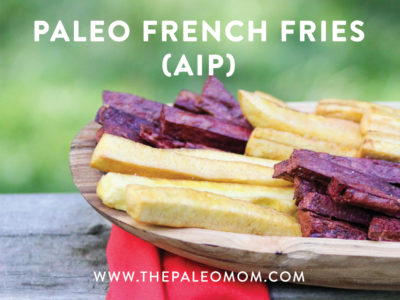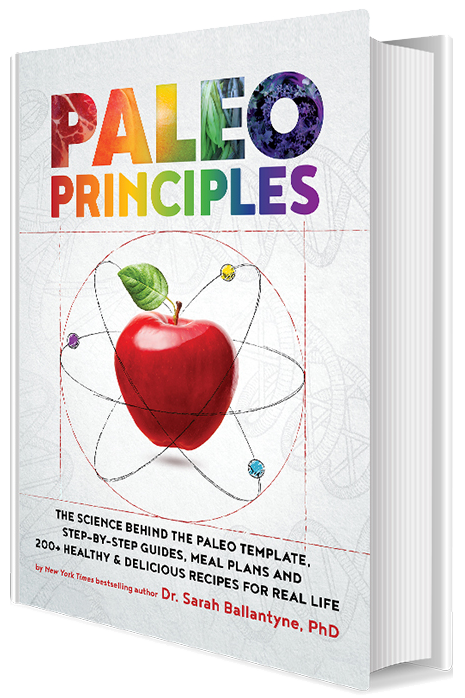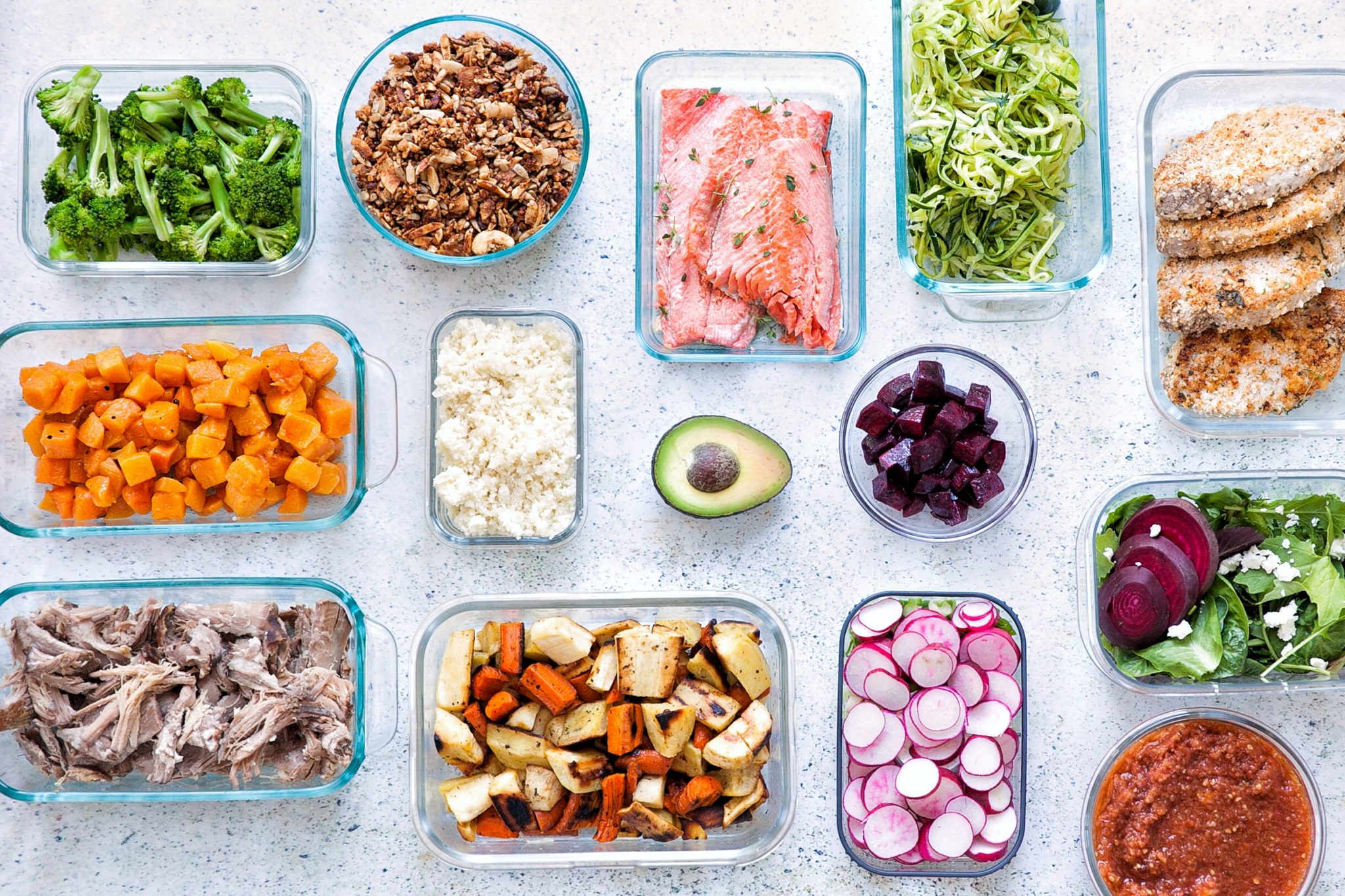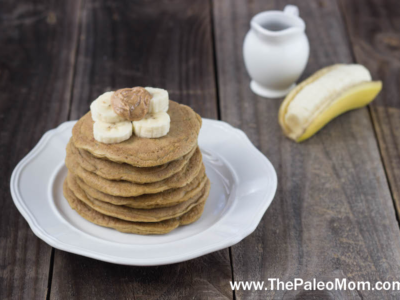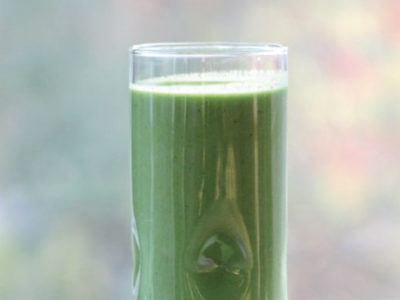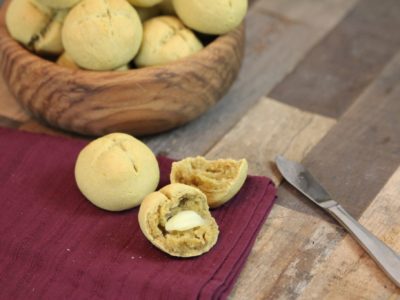One area of my health journey that’s adapted over my 4-year Paleo journey is my outlook on carbs. Many of you know that I initially lost 100+ pounds following a low-carb diet, then managed to maintain my weight loss when I switched to Paleo. However, as my research into the basic tenets of the Paleo diet has deepened, I’ve come to see carbohydrates (healthy, plant-based ones, that is) as crucial!
Carbohydrates are absolutely essential for healthy hormone production, and keeping them in my diet in moderate amounts is one of the ways I feel my best. I find I respond particularly well to starchy carbohydrates after a tough workout. Plus, as I discuss in Go To Bed: 14 Easy Steps to Healthier Sleep, studies indicate that eating starchy carbs a couple hours before bed helps improve sleep quality!
So, in my quest for AIP-compliant carbohydrates (I am sensitive to nightshades and can’t eat white potatoes), I’ve come up with a couple creative recipes! One is this fantastic recipe for Paleo French Fries, taken from The Paleo Approach Cookbook. Now, you’re probably thinking, “Sarah, there’s just no way that French Fries are healthy.” The truth is, french fries are only as unhealthy as the low-quality ingredients used to produce them. Did you know that before they switched to a blend of vegetable oils to cut costs, McDonald’s used tallow to make their famous french fries? These days they use a blend of vegetable oils, which I definitely don’t recommend consuming. This recipe is an excellent alternative!
I typically deep fry in pasture-raised lard, but you can use tallow (grass-fed preferred) or palm shortening or even refined or unrefined coconut oil if you prefer. I prefer the flavor of things fried in lard or tallow versus other choices. Which ever fat you use, make sure to set the temperature on your deep fryer (or tweak the settings of the element on your stovetop) to maintain 5F below smoke point and anywhere in the deep frying sweet-spot zone of 350F to 375F (because temperature control is so much trickier on the stovetop, I recommend sticking to 10F below smoke point or using a very high smoke point fat like refined coconut oil or palm shortening just to be safe–it that has you frying at 340F, that’s okay too). By the way, that 350F to 375F sweet-spot is the temperature that maximizes browning and even cooking, while minimizing fat absorption into the fries (which makes for soggy, oily fries).
Here are smoke points of fats you might want to use, just for easy reference:
- Coconut Oil (Unrefined) 350F
- Coconut Oil (Refined) 450F
- Lard 370F
- Palm Shortening 450F
- Tallow 400F
Because I used lard, my deep fryer was set to 365F. If you’re using a heavy-bottomed pot for deep-frying, more detailed instructions are included in this recipe for sweet potato chips.
Although we think of french fries as “junk food,” when cooked with nutrient-dense root vegetables or green plantains and a high-quality cooking fat that is kept below its smoke point, they’re fantastically healthy. Add mineral-rich sea salt and there’s no reason why these fries can’t be a staple in your home!
Prep Time: 10-15 minutes
Cook Time: 20 minutes
Serves: 8
Ingredients:
- 2 pounds green plantains or starchy root vegetable (sweet potatoes, yam, lotus root, taro root, celery root, or parsnip)
- lard or other fat, for deep frying
- 2 teaspoons sea salt
Directions:
- Peel your root vegetables if they have a tough skin; otherwise, simply clean them. Cut the root vegetables into French fry−like strips (2 to 4 inches long and 1⁄2 inch thick), 1⁄2-inch thick wedges, or 1⁄2-inch-thick rounds. Rinse and drain on paper towels.
- Heat the lard to 360°F in a countertop deep-fryer or heavy-bottomed pot over medium heat with a deep- fry thermometer attached to the side. Use enough fat to fill your deep-fryer to the fill line or to have 2 inches of fat in the bottom of your pot.
- Cook the vegetables in small batches so as to not overcrowd, for 3 to 7 minutes, until browned and crisp on the outside.
- Allow to dry on a paper towel, tea towel, or newsprint-lined plate or rimmed baking sheet. Sprinkle with the salt while still warm.
Tips:
The best root vegetables for making French fries are those with a naturally low water content. Less starchy vegetables like rutabaga, turnips, carrots, and beets tend not to crisp up on the outside and are better if left to other cooking methods. Even some varieties of sweet potato work better than others due to the water content (my favorites are purple sweet potatoes and Japanese sweet potatoes).
If using yuca, a little extra prep work is required. Peel and cut into rectangular “fries,” wedges, or rounds, then soak in water in the fridge for 24 hours; this reduces the cyanogenic glycoside content. Drain and rinse. Then boil in water for 10 minutes. Drain well and pat dry with paper towels before deep-frying.
If using more than one kind of root vegetable, cook the vegetables in separate batches, since different root vegetables require slightly different cooking times.

